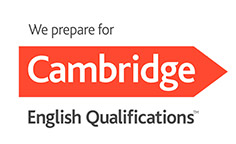Making Grammar Engaging for YLs
Grammar, when it appears in a coursebook, can sometimes be presented in a somewhat dry and uninspiring manner. It therefore often falls to the teacher to make the grammar lesson engaging for the learners. This is important for learners of all ages, but particularly for our Young Learners and teens. So, here are our top ten tips for making grammar more engaging.
1. Personalise it
A great way to engage learners in a grammar activity is to use personalisation. This could mean making the topic about something in which the students are all interested, such as a video game they all play or a series of films they enjoy. Alternatively, we can include the names of our learners in the grammar activities. It’s amazing how much more engaged learners are in grammar practice if they simply see their name or the name of their classmates in the activity.
2. Use guided discovery
It has been proven that if learners work out grammatical rules for themselves rather than it having it explained to them, they are far more likely to retain this information. It is therefore important that we make our grammar lessons more student-centred and less teacher-fronted. We should create activities which encourage learners to recognise how grammar rules work, and then provide them with tasks that get them to record these rules in a clear and memorable way. If students are challenged in this way, not only is the grammar more memorable, but the lesson itself is more stimulating for them.
3. Know your stuff
Nothing can stop a grammar lesson in its tracks quicker than a teacher who is not familiar with the item of grammar they are teaching. This means that it is essential for teachers to prepare thoroughly before they teach their chosen grammar point. This preparation will ensure that you are not left floundering if your students ask you a question that you hadn’t prepared for. Make sure you analyse the structure you are teaching as well as any exceptions to the rules.
4. Make it visual
Many of us have learners who find it difficult to process things like grammar in written form. To help them, it’s important that we also present grammar in a visual way. This could be through timelines drawn on the board or in a PowerPoint presentation. Alternatively, images can be very useful in clarifying grammar. For example, a comic book storyboard can be a great way of eliciting tenses and highlighting to learners the order in which events occur.
5. Give silly examples
A great way to make your examples in a grammar lesson memorable is to make them silly. If your students are anything like us, the sillier the better and the easier to remember. Your example for the second conditional could be ‘I would beat Usain Bolt in the 100 metres, if I tied his shoelaces together’. Or for verb patterns why not ‘In his spare time Hugo enjoys eating deep fried tarantulas and pickled cockroaches’. And if you can’t come up with a silly example, rest assured that your students will come up with some for you!
6. Have plenty of freer practice
A common complaint amongst students is that grammar lessons tend to be very book or paper based. However, this doesn’t always have to be the case. While it is important to have a clear presentation and controlled practice stage in a good grammar lesson, the free practice part is what the students really enjoy. So, make sure you plan plenty of time for this and ensure you get to it in your lesson. This is the stage where the students get to speak, and you get to see if they have really understood the grammar point you are teaching
7. Competition
Making a grammar activity competitive is a good way of getting learners to focus on the accuracy of the grammatical item you are teaching. If winning or losing is dependent on using the grammar item correctly or spotting when it has/hasn’t been used correctly, learners will be much more focussed on their own language production. Used in the right way, competitions such as grammar auctions and backs to the board can be a really good way to reinforce the grammar item you have just taught.
8. Use kinaesthetic activities
Just as some learners need grammar to be presented in a visual way, for others a kinaesthetic approach is just as important. This could be a simple word order activity where learners have to put cards in the correct order to complete a sentence. Alternatively, each student can become part of the sentence and then the students have to arrange themselves in the correct order. Making things physical not only makes a change from the coursebook but can also make the grammar item more memorable for the whole class
9. Don’t use meta language above the students’ level
Something that can be really demotivating for students in a grammar lesson is if a teacher uses too much meta language or meta language that is above the students’ level. To be honest, if meta language is not essential to the lesson, it should be avoided as the learners do not need it in order to produce the language. Keep your grammar presentation clear and concise so that it is of maximum benefit to your learners.
10. Make the most of technology
Finally, technology like your smartboard or interactive quizzes like Kahoot and Quizizz are another way of bringing your grammar lessons to life. Young learners these days are digital natives and enjoy using technology in class and at home. Use these apps to present grammar in an engaging way or as a fun form of practice that gets them out of the coursebook and actively involved in their learning.




